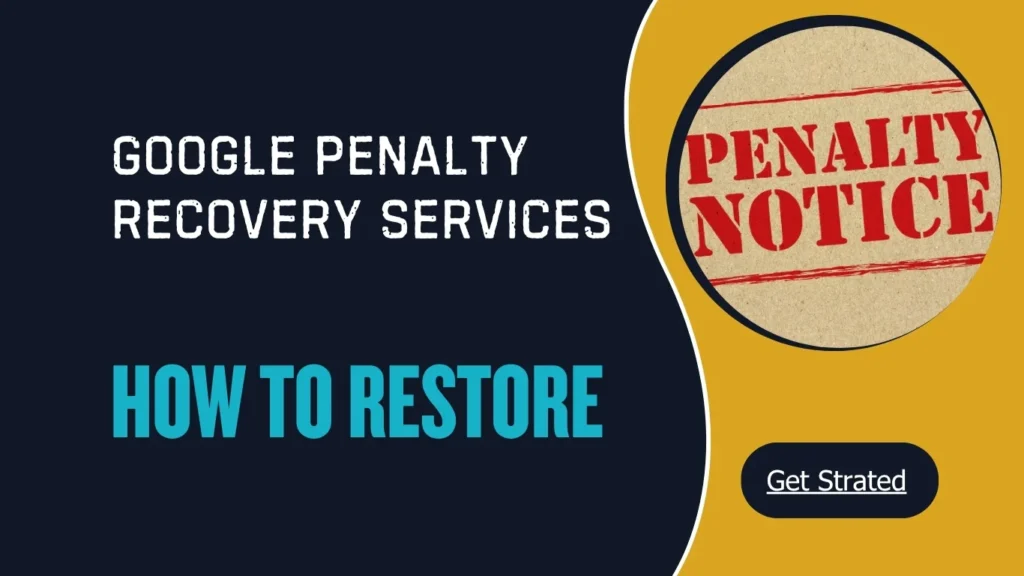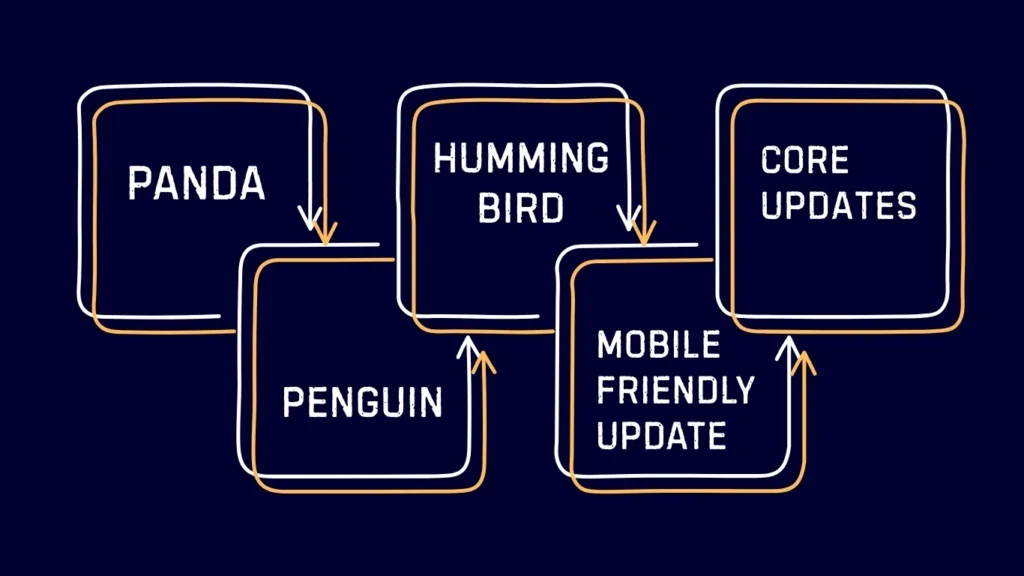Google Penalty Recovery Services: Restore Your Rankings

If you’ve been working hard on SEO, the last thing you want is to see your website traffic drop or your rankings fall in the search results. Sometimes, this happens because Google has applied a penalty — either through a manual action or an algorithmic update. The good news? Recovery is possible. It takes a clear process, careful analysis, and some updates to your website. While some site owners choose to tackle this themselves, others find value in working with professional Google penalty recovery services that can accelerate the diagnosis and remediation process.
In this post, we’ll guide you through everything you need to know to get your site back on track—whether you’re doing it yourself or considering expert penalty recovery services to help navigate the complexities of Google’s guidelines and reconsideration processes.
What Is a Google Penalty?
Google penalties are basically a “red card” from the search engine. They can happen for a variety of reasons and come in two main forms:
Algorithmic Penalties – Automatic penalties triggered by Google updates like Panda, Penguin, or the Helpful Content update, designed to ensure high-quality search results.
Manual Penalties – These occur when a human reviewer at Google flags your site for guideline violations, such as spammy backlinks, hidden content, or other infractions.
Even if you didn’t do anything wrong, mistakes or algorithm changes can sometimes affect innocent websites. You can check for manual penalties in Google Search Console → Security & Manual Actions → Manual Actions.
Recovering from a Google penalty requires a strategic approach. Whether you’re dealing with an algorithmic hit or a manual action, the recovery process involves identifying the root cause, implementing fixes, and in the case of manual penalties, submitting a reconsideration request to Google. This can include cleaning up toxic backlinks, removing thin or duplicate content, fixing technical issues, or revising content to meet quality guidelines. If you’re struggling with traffic loss or have received a penalty notification, professional penalty recovery services can help diagnose the issue, develop a remediation plan, and guide you through the recovery process to restore your site’s rankings and visibility.
Common Causes of Google Penalties
- Keyword Stuffing: Repeating the same keywords unnaturally.
- Hidden or Cloaked Content: Showing different content to users than to search engines.
- Irrelevant Keywords or Links: Attempting to rank for unrelated terms.
- Bad Redirects: Sending users to the wrong pages.
- Malware or Spyware: Distributing harmful software.
- Thin or Duplicate Content: Pages that add little or no value.
- Spammy Backlinks: Low-quality links manipulating rankings.
- Technical Issues: Errors with sitemaps, robots.txt, or indexing problems.
Algorithm Updates from Google
Google updates its algorithms regularly to improve search quality. These updates can sometimes cause penalties even if your site follows best practices. Key updates to be aware of:

- Panda: Targets low-quality or thin content.
- Penguin: Focuses on spammy backlinks and manipulative link practices.
- Hummingbird: Improves understanding of search intent.
- Mobile-Friendly Update: Prioritizes mobile-optimized websites.
- Helpful Content Update: Rewards genuinely helpful, human-first content.
- Core Updates: Broad changes that can affect rankings across many niches.
Tracking these updates is critical for understanding sudden traffic drops or ranking changes. Tools like Moz, SEMrush, or Ubersuggest can help identify which update may have affected your site.
Signs Your Website Needs Google Penalty Recovery Services
Not every traffic drop signals a penalty, but these red flags are worth investigating:
- Sudden Drop in Organic Traffic: Large, unexpected decreases in visits.
- Ranking Fluctuations: Multiple pages dropping simultaneously.
- Manual Action Notifications: Alerts in Google Search Console.
- Backlink Problems: Spammy or toxic links affecting authority.
- Content Issues: Thin, outdated, or duplicate content.
Identifying these signs early allows you to take corrective action before further damage occurs.
How Soon Can You Recover?
Recovery times vary significantly depending on the type of penalty your website has received:
Manual Penalties: Typically resolve within 10–30 days after submitting a reconsideration request to Google. Once you’ve addressed the violations and documented your corrective actions, Google’s team will review your site and can lift the penalty relatively quickly.
Algorithmic Penalties: Recovery can take considerably longer—anywhere from several weeks to several months—depending on the severity of the issues and how deeply they’re embedded in your site. Unlike manual penalties, algorithmic penalties aren’t lifted through a reconsideration request; instead, your site must naturally recover as Google’s algorithms re-crawl and re-evaluate your content.
What Algorithmic Recovery Involves
Recovering from algorithmic penalties requires comprehensive remediation:
- Content Quality Improvements: Removing thin, duplicate, or low-quality content and replacing it with valuable, original material
- Backlink Profile Cleanup: Identifying and disavowing toxic or spammy backlinks that may be harming your site’s reputation
- Technical SEO Fixes: Resolving crawl errors, improving site speed, fixing mobile usability issues, and ensuring proper indexation
Professional Google Penalty Recovery Services
If your site has been hit with a Google penalty, professional recovery services can significantly accelerate your return to good standing. Expert SEO teams can conduct thorough penalty audits, identify the root causes, implement comprehensive fixes, and handle the entire reconsideration process on your behalf. With specialized knowledge of Google’s quality guidelines and penalty patterns, professional recovery services can help you avoid common mistakes that might prolong your recovery or result in rejected reconsideration requests.
Steps to Recover From a Google Penalty
1. Check Your Rankings
Use Google Analytics, Search Console, or a Website Penalty Indicator to identify which pages and keywords dropped.
2. Investigate Algorithm Updates
Compare traffic drops to recent Google algorithm changes. This helps pinpoint whether the penalty is algorithmic.
3. Perform an SEO Audit
Identify technical, on-page, and backlink issues:
- Crawl errors or indexing problems
- Slow page speed or mobile usability issues
- Keyword overuse or missing metadata
- Spammy backlinks
Focus on high-impact issues first to make the most of your Google penalty recovery services and speed up your site’s restoration.
4. Conduct a Content Audit
- Identify thin, outdated, or duplicate content
- Refresh or combine pages for value
- Add missing metadata and optimize images
- Ensure content aligns with search intent
5. Clean Up Your Backlink Profile
- Identify toxic links using Ahrefs, Majestic SEO, or Ubersuggest
- Request removal from webmasters
- Use Google Disavow Tool if needed.
6. Submit a Reconsideration Request (If Manual)
When submitting a reconsideration request, explain the corrections made and how your site now complies with Google’s guidelines, using Google penalty recovery services to ensure all issues are properly addressed.
Prevent Future Google Penalties
- Regularly audit backlinks and content
- Maintain high-quality, valuable content
- Avoid black-hat SEO techniques
- Stay updated on Google algorithm changes
- Monitor site performance via Analytics and Search Console
Conclusion
Google penalties can feel like a major setback, but recovery is possible with the right approach. By following a structured plan — including checking rankings, auditing SEO and content, cleaning backlinks, and submitting reconsideration requests — most sites can regain lost traffic and rankings. Implementing Google penalty recovery services as part of this process ensures that issues are addressed thoroughly and effectively.
Proactive measures like regular audits, content updates, and healthy link-building habits, combined with ongoing Google penalty recovery services, will protect your site against future penalties, keeping it compliant and resilient in Google’s search results.
